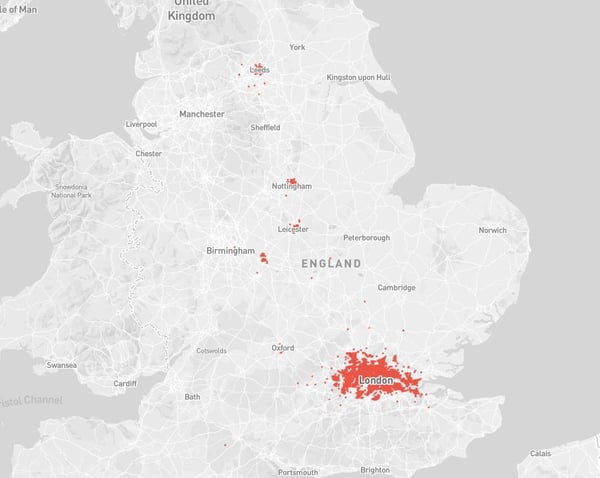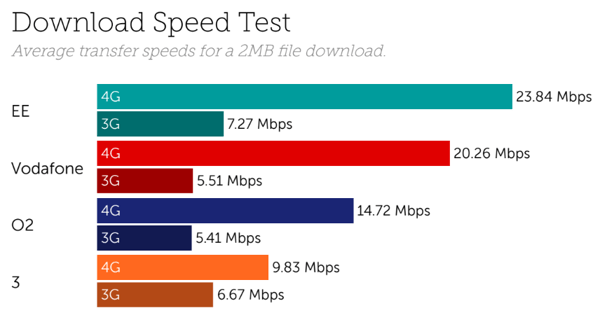O2 have invested heavily this year, spending over half a billion pounds on new spectrum in April and have announced plans to connect over 1,000 UK sites by the end of 2018. Tutela has been monitoring the rollout of this new 2.3Ghz spectrum via our crowdsourcing panel to see where it's been activated and how big an impact O2's investment has made to their customer's experience.
Key findings:
- The new 2.3Ghz band has been activated in 6 cities so far
- O2 has activated ~650 cell tower sites to carry the new spectrum band
- Download speeds on the new 2.3Ghz band are 80% faster than O2's 4G average
.png?width=752&name=image%20(2).png)
About our research
To understand network performance, we took more than 10 billion network measurements during August including 630 thousand mobile speed tests. The data reveals the spectrum being used by different devices in different locations - in addition to the performance and user experience received by the user. We test mobile networks in a way that represents the day-to-day usage and experience of real-world mobile users, such as accessing websites or downloading and sending images (not the peak speeds under test conditions), so we can see what a typical user is experiencing on any given network.
2.3 Ghz activated in six cities and 650 cell towers
Our research in August show O2's April 2018 investment of £500m is already delivering a much-improved mobile data experience for O2 users where the spectrum has been activated.
Our spectrum analysis shows O2 have so far activated approximately 650 cell tower sites with their new 2.3Ghz band in six cities across England, with the majority of sites being switched on within the M25. Subscribers in London, Oxford, Nottingham, Leeds, Leicester and Coventry have seen download speeds improve by more than 80% to 26.9Mbps, when using the newly-activated 2.3Ghz band, compared to O2’s average 4G performance of 14.7Mbps.
The speed of this roll-out is impressive, considering that the spectrum only became available to O2 during April. As O2 continues to activate the new spectrum in more cities and cell towers, O2 subscribers, as well as the subscribers to MVNOs like giffgaff, Tesco Mobile, Sky Mobile and Lycamobile who use the O2 network (and who also have access to this spectrum), can expect to see a similar performance boost.
Locations where Telefonica's 2.3 Ghz spectrum has been seen

Does this change overall performance?
As it stands, O2 currently place third out of the four UK mobile operators for download speeds in our latest report based on data collected in August, behind both EE and Vodafone. As only a limited number of locations and subscribers are using the new 2.3Ghz bands, we haven't yet seen a shift in position however this rollout could quickly see them move up the rankings in the not too distant future.

What's next for O2?
According to a press announcement released earlier this year, O2 plan to rollout their new 2.3Ghz band to a further four cities by the end of the year, totalling ten, and focusing on major transportation hubs in major cities. O2 also won 40Mhz of 3.4Ghz spectrum at the auction in April, which is expected to play a major role in the deployment of 5G. However, O2 have previously announced they aren't planning on launching 5G commercially until 2020, so you'll have to keep your fingers crossed they switch on their 2.3Ghz band in a city near you soon.
Discover more of our data insights for the UK, and across the world, by joining Tutela Insights today.

